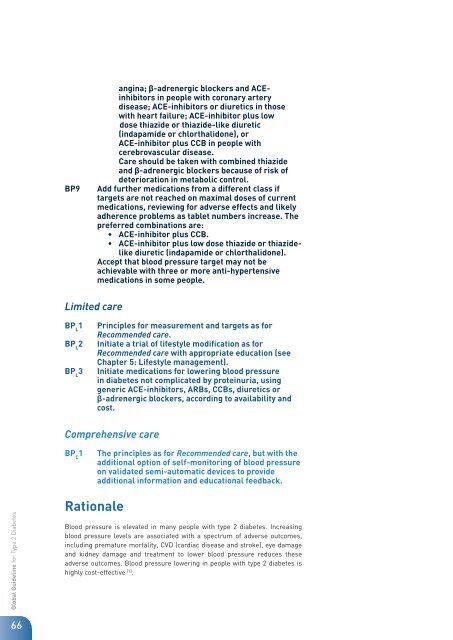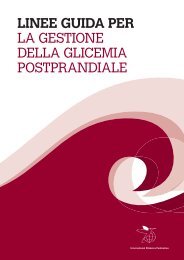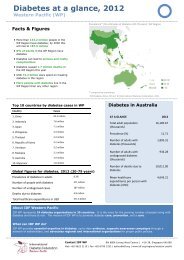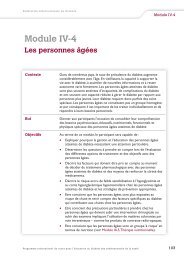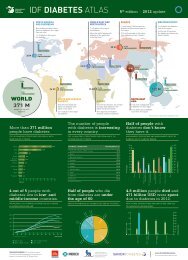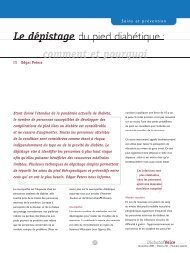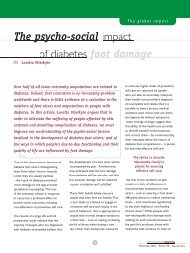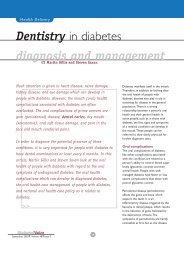Evidence-base - International Diabetes Federation
Evidence-base - International Diabetes Federation
Evidence-base - International Diabetes Federation
Create successful ePaper yourself
Turn your PDF publications into a flip-book with our unique Google optimized e-Paper software.
Global Guideline for Type 2 <strong>Diabetes</strong><br />
66<br />
angina; β-adrenergic blockers and ACE-<br />
inhibitors in people with coronary artery<br />
disease; ACE-inhibitors or diuretics in those<br />
with heart failure; ACE-inhibitor plus low<br />
dose thiazide or thiazide-like diuretic<br />
(indapamide or chlorthalidone), or<br />
ACE-inhibitor plus CCB in people with<br />
cerebrovascular disease.<br />
Care should be taken with combined thiazide<br />
and β-adrenergic blockers because of risk of<br />
deterioration in metabolic control.<br />
BP9 Add further medications from a different class if<br />
targets are not reached on maximal doses of current<br />
medications, reviewing for adverse effects and likely<br />
adherence problems as tablet numbers increase. The<br />
preferred combinations are:<br />
• ACE-inhibitor plus CCB.<br />
• ACE-inhibitor plus low dose thiazide or thiazidelike<br />
diuretic (indapamide or chlorthalidone).<br />
Accept that blood pressure target may not be<br />
achievable with three or more anti-hypertensive<br />
medications in some people.<br />
Limited care<br />
BP L 1 Principles for measurement and targets as for<br />
Recommended care.<br />
BP L 2 Initiate a trial of lifestyle modification as for<br />
Recommended care with appropriate education (see<br />
Chapter 5: Lifestyle management).<br />
BP L 3 Initiate medications for lowering blood pressure<br />
in diabetes not complicated by proteinuria, using<br />
generic ACE-inhibitors, ARBs, CCBs, diuretics or<br />
β-adrenergic blockers, according to availability and<br />
cost.<br />
Comprehensive care<br />
BP C 1 The principles as for Recommended care, but with the<br />
additional option of self-monitoring of blood pressure<br />
on validated semi-automatic devices to provide<br />
additional information and educational feedback.<br />
Rationale<br />
Blood pressure is elevated in many people with type 2 diabetes. Increasing<br />
blood pressure levels are associated with a spectrum of adverse outcomes,<br />
including premature mortality, CVD (cardiac disease and stroke), eye damage<br />
and kidney damage and treatment to lower blood pressure reduces these<br />
adverse outcomes. Blood pressure lowering in people with type 2 diabetes is<br />
highly cost-effective [1] .


